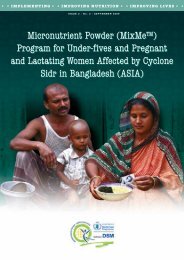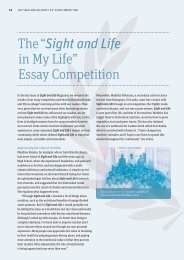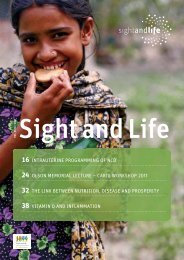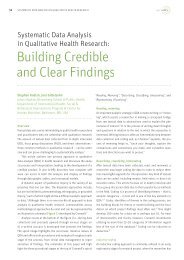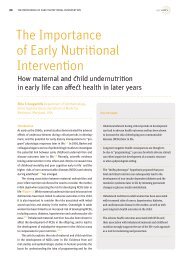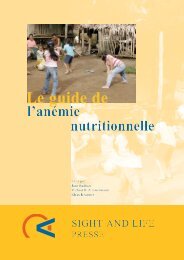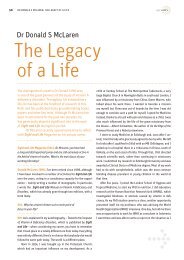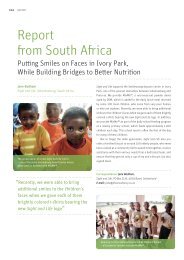Sight and Life Magazine 1/2011
Sight and Life Magazine 1/2011
Sight and Life Magazine 1/2011
Create successful ePaper yourself
Turn your PDF publications into a flip-book with our unique Google optimized e-Paper software.
SIGHT AND LIFE | VOL. 25 (1) | <strong>2011</strong>WHAT'S NEW83had access to life-saving vitamin A,” says Dr Klaus Kraemer,Director of <strong>Sight</strong> <strong>and</strong> <strong>Life</strong>.In signing this Memor<strong>and</strong>um of Underst<strong>and</strong>ing, both partnershope to engage other international <strong>and</strong> Indian for-profit,not-for-profit <strong>and</strong> government entities. The aim is to mobilizesupport <strong>and</strong> participate in this initiative, in order to harnessinnovative public-private partnerships to sustainably tacklethe vitamin A deficiency epidemic in India <strong>and</strong> improve thelives of millions of infants, children <strong>and</strong> women.For more information on Vitamin Angels go towww.vitaminangels.orgUNICEF Workshop on Scaling Up the Useof Micronutrient Powders to Improve the Quality04lementary Foods for Young Children<strong>and</strong> the Caribbean04AmericaPeruvian children are among those to be impactedby plans to scale up MNPsIn June <strong>2011</strong>, UNICEF <strong>and</strong> the US Centers for Disease Control<strong>and</strong> Prevention (CDC) co-hosted a four-day workshop inMexico to discuss the role of micronutrient powders (MNPs)in improving the quality of complementary feeding in LatinAmerica <strong>and</strong> the Caribbean <strong>and</strong> to support countries in theirplans to introduce <strong>and</strong> scale up MNP programs. Extensiveresearch shows that MNPs are safe, efficacious, acceptable,easy to use <strong>and</strong> do not alter the taste or appearance of food.MNPs are particularly useful to improve the quality of complementaryfoods prepared at home. Based on current evidence,MNPs can easily <strong>and</strong> cost-effectively be administered underprogrammatic conditions <strong>and</strong> implemented at scale. Successfulpublic health scale-up of MNPs does require that they areintegrated within Infant <strong>and</strong> Young Child Nutrition (IYCN)<strong>and</strong> Early Child Development (ECD) programs. Under theseconditions, MNPs have the potential not only to improve themicronutrient content of complementary food <strong>and</strong> decreasethe burden of anemia, but also to improve complementaryfeeding <strong>and</strong> care practices of young children that will, in turn,lead to better growth <strong>and</strong> development outcomes for youngchildren.Many countries in Latin America <strong>and</strong> the Caribbean (LAC)are poised to scale up the use of MNPs as part of integratedIYCN <strong>and</strong> ECD strategies. Furthermore, a unique aspect of theLatin American experience is the use of MNPs as part of an integratedpackage of services included under social protectionschemes such as Conditional Cash Transfer (CCT) programs toreduce social inequities.The comprehensive workshop covered relevant topics,including the current status of MNP interventions in LatinAmerica <strong>and</strong> the Caribbean; the evidence base for MNPs;relevant recommendations regarding MNPs; MNPs in nationalpolicies; MNPs integrated in nutrition strategies; the design ofMNP interventions; MNPs <strong>and</strong> other interventions to improvemicro-nutrient intake; choice of MNP formulation; target⇢



